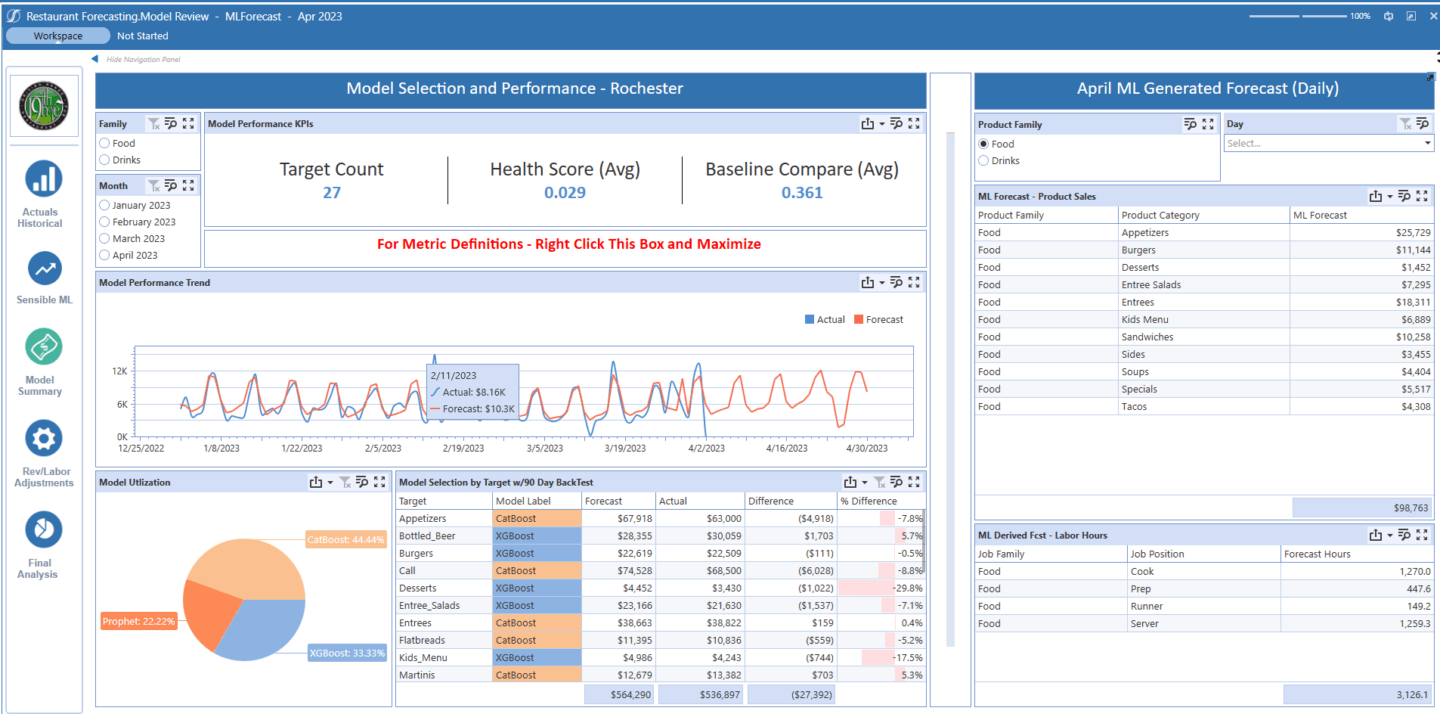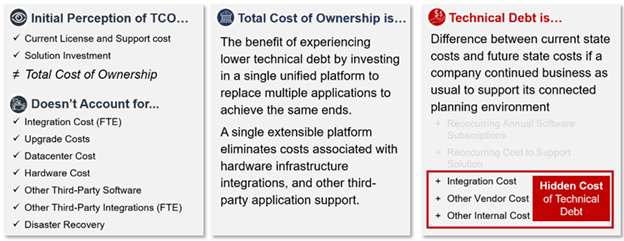Machine learning (ML) has undoubtedly revolutionized how data is processed and utilized in the 21st century. The way ML can detect patterns and connections within vast data sets has made it an indispensable tool across diverse fields, including Enterprise Performance Management (EPM).
As companies continue to embrace ML to enhance planning, adopting a practical sensible approach to ML – one that balances automation with transparency and human insight – has become increasingly important. After all, effective planning is critical for businesses to remain competitive and adapt to changing market conditions.
At OneStream, we call this Sensible ML.
Introducing Sensible ML
OneStream’s Sensible ML for EPM is an approach that seeks to achieve the automation-transparency-insight balance by combining the power of ML with the best practices of EPM. The result? A more intelligent and effective planning process. In this blog post, we will explore three key capabilities that are essential for successful intelligent planning: strong ML Operations, transparency-fueled data insights and the ability to surface ML model results.
Key Capability 1: Enable strong ML Operations (MLOps) for organizations to develop, deploy and manage machine learning (ML) models at scale
In EPM, one key challenge of implementing ML is the complexity involved in developing, deploying and managing ML models at scale. Why? Well, these steps take a significant amount of time. Having strong MLOps helps overcome that issue.
MLOps
MLOps is a set of practices and processes that helps organizations address ML lifecycle challenges by providing a systematic approach for managing the entire ML lifecycle, from data preparation and model training to deployment and monitoring. Through MLOps, organizations can automate tasks such as model training, deployment and monitoring, as well as collaboration and communication among cross-functional teams involved in the development and deployment of ML models. This automation helps organizations accelerate the data pipeline process, reduce errors and rework, and improve the overall reliability and performance of ML systems.
Most of us remember forecast variance analysis where we had to investigate the basis for a historical number and the assumptions to any adjustments. Without optimized MLOps, this recurring process can be highly challenging since data transparency is a critical result in MLOps.
Sensible ML enables organizations to automate the entire ML lifecycle using AutoML capabilities for data preparation, model training, model deployment, and model health monitoring. Sensible ML automates a lot of the laborious tasks required by data scientists via feature engineering and model selection for each individual forecasted item (see Figure 1).

Figure 1: Sensible ML Process Flow
Sensible ML excels in MLOps by providing a comprehensive set of capabilities that enable organizations to develop, deploy and manage ML models at scale.
Key Capability 2: Empower data insights transparently to analyze and compare human-generated and ML forecasts
Another key capability of Sensible ML for EPM is transparency. Without transparency, there would be no way to ensure insights generated by ML models are aligned with business objectives. Lots of ML solutions in the market lack transparency and are viewed as black-box technology.
Why does Finance care?
By having transparency into the decision-making process of ML models, organizations can better understand how ML is generating insights and what factors are driving ML-based recommendations. This capability enables organizations to compare and analyze human- and ML-generated forecasts, identify anomalies and inconsistencies, and improve the overall accuracy and effectiveness of the planning process.
And Sensible ML enables users to consume models via dashboards and reports by leveraging OneStream, which unifies enterprise planning and data science on a common platform. Having everything in one place removes the need to push data to third-party tools and, in turn, removes technical debt (se Figure 2).

Figure 2: Sensible ML Dashboard
The Importance of Controlling Data Management and Reducing Technical Debt
Effective data management enables businesses to make informed decisions based on accurate and reliable data. But controlling data management is what prevents data movement/risk and reduces technical debt. Data quality issues are perpetuated by transferring data and can arise when proper data management practices aren’t in place. These issues can include incomplete, inconsistent or inaccurate data – all of which inevitably leads to incorrect conclusions, poor decision-making and wasted resources.
One of the biggest oversights when dealing with data management is only focusing on the Return on Investment (ROI) and dismissing fully burdened technical debt (see Figure 3). For example, many Finance teams use performance measurements such as Total Cost of Ownership (TCO) and ROI to qualify that a solution is good for the organization. But rarely does the organization dive deeper – beyond the performance measurements to include opportunities to reduce implementation and maintenance waste. Unfortunately, this view of performance measurements does not account for the hidden complexities and costs associated with the negative impacts of data movement.
Technical debt is MORE than the TCO.

Figure 3: Technical Debt Is More Than the Total Cost of Ownership
Sensible ML within OneStream provides transparency to analyze and compare human-generated and ML forecasts or augment ML forecasts to empower data insights and strategic decisions.
Key Capability 3: Utilize model results in OneStream and downstream processes
The final key capability of Sensible ML for EPM is the ability to surface ML model results within OneStream. With Sensible ML, organizations can generate forecasts and insights using machine learning algorithms and then seamlessly leverage or compare the results in existing planning and analytics processes within the OneStream platform.
Human intuition or “tribal knowledge” known within the organization can also augment ML forecasts to create an even more accurate prediction. For example, a global retailer can adjust forecasts in specific regions to align with cultural preferences and local events within that region. This type of augmented ML forecast can then be used to drive downstream processes, such as labor or production planning.
The unification of ML with EPM allows for a more robust and streamlined planning process –one that increases accuracy, efficiency and resiliency to an organization’s financial and operational planning processes, from start to finish. This seamless blend of ML within EPM helps reduce errors and inconsistencies that can arise when using multiple systems. And that’s key to successful Intelligent Planning.
Conclusion
Sensible ML for EPM is a powerful approach that combines the best practices of EPM with the power of ML to create a more intelligent and effective planning process. By implementing the key capabilities of MLOps, transparency and utilization, organizations can leverage the power of ML to get all the benefits of Intelligent Planning – ultimately enhancing the planning process and improving decision-making across the organization.
Learn More
To learn more about how FP&A teams are moving beyond the AI hype, stay tuned for additional posts from our Sensible ML blog series or download our white paper here.
Get Started With a Personal Demo



